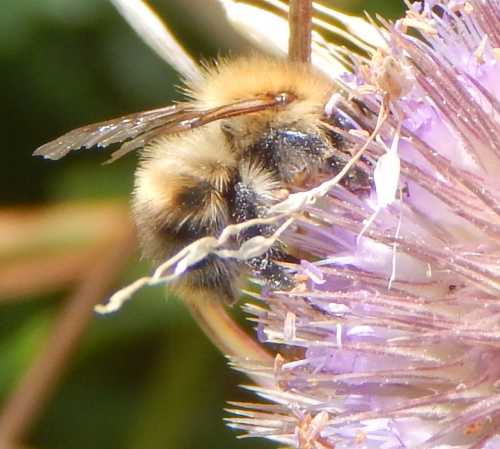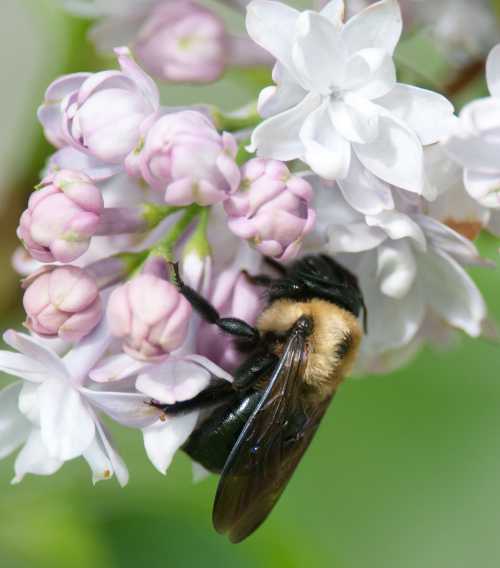How To Tell If A Bee Is Dead Or Sleeping
As more and more people grow increasingly concerned about bees, I am sometimes asked how to tell if a bee is dead or sleeping, and whether a bee they are observing is dying or tired (simply resting).
This can sometimes be challenging, especially given that a bee is able to remain motionless whilst sleeping.
However, there are visual signals you can look out for that will make it obvious in some scenarios.
How To Tell If A Bee Is Dead Or Sleeping
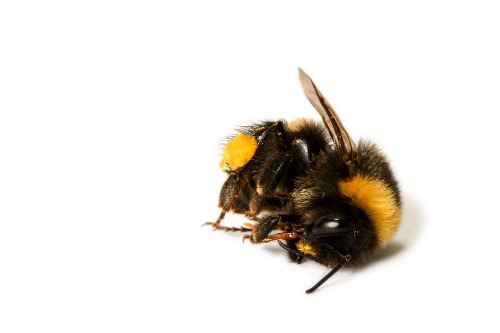 A dead bumble bee
A dead bumble beeThe postures for a dead bee, versus a sleeping bee are actually quite different.
Dead Bee Posture
To identify whether or not a bee has died, look out for these clues:
- The bee is motionless, and the body of the bee is often somewhat curled up and lying on its side.
- The bee is motionless and lying on its back.
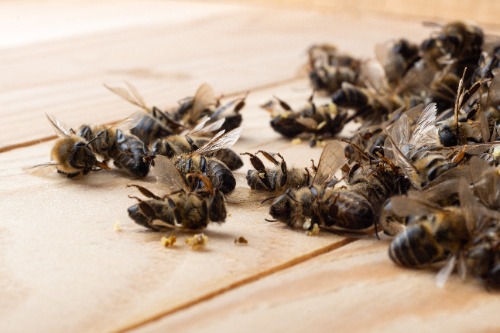 Dead honey bees
Dead honey beesPosture Of Sleeping Bees
Sleeping bees can have variable postures depending on species, however:
- A bee that is merely asleep tends to be resting with its body adjacent to a surface (such as a leaf, flower or ground) or;
- May be clinging motionless inside a flower, or onto a leaf, flower stem or twig.
- Antennae and wings take on a relaxed and often drooping position with many species.
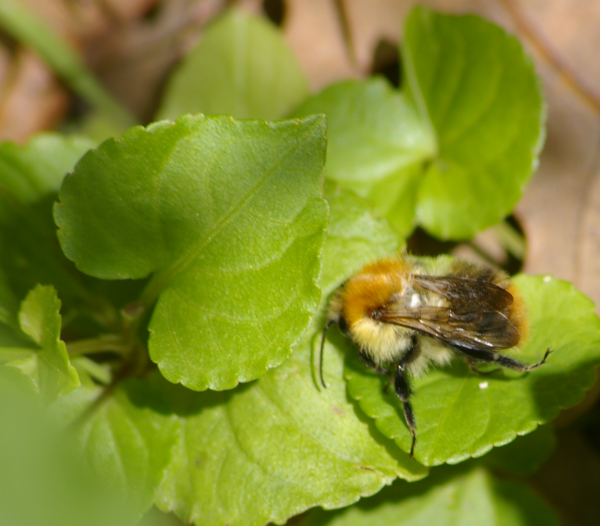 Note the relaxed antennae and posture of this bumble bee snoozing on a leaf
Note the relaxed antennae and posture of this bumble bee snoozing on a leafI have written a whole page called Do Bees Sleep? where you can see more photographs.
Is The Bee Dying Or Tired / Resting?
The bee may still be alive, but inactive.
I often receive emails from frantic readers who are concerned about a bumble bee they have just found, usually on the ground or on a wall. The bee is apparently still alive, but practically motionless.
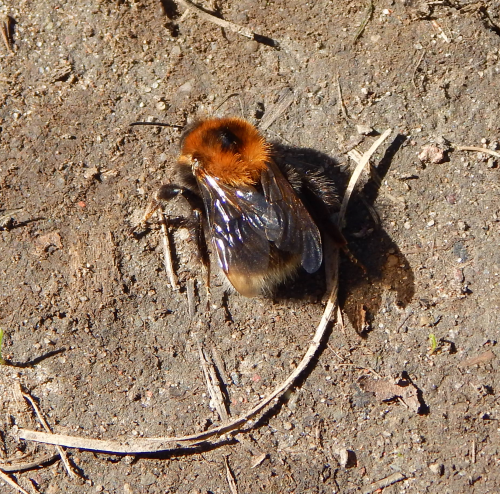 A Bombus hypnorum resting on the ground
A Bombus hypnorum resting on the ground
Motionless bees are sometimes just resting
If there weather is dry, in most cases, motionless bees are simply resting. It is generally best to assume the bee is resting, and leave it alone.
If the bee is looking wet and bedraggled, it may benefit from a little TLC - see my page: Found A Bee? Please note, the aim should always be to set the bee free at the very earliest possibility.
A motionless bee could, however, be near the end of its life, due to natural or unnatural causes (such as poisoning). If you suspect poisoning, especially the use of insecticide close by, it may be appropriate to report it to your local authority.
Signs a bee is definitely dying:
- they will sometimes be found writhing around on the ground, perhaps due to poisoning.
- other unusual behaviours could include trembling or quivering, or paralysis could be sign of disease.
Note that as a bee nears the end of its life, it will begin to lose hair, and may take on a somewhat tatty appearance, with dishevelled wings. It's best to leave these bees alone and allow nature to take its course.
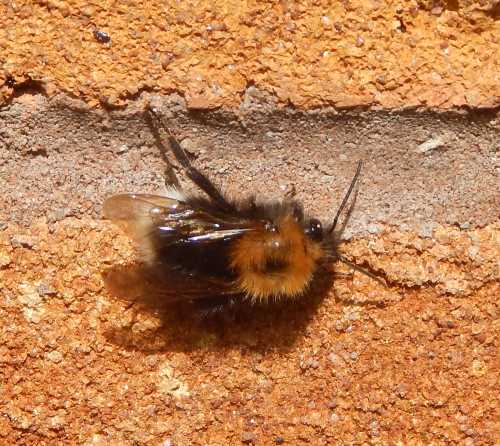 This tree bumble bee Bombus hypnorum remained almost motionless on the wall of our house for some time, before flying off.
This tree bumble bee Bombus hypnorum remained almost motionless on the wall of our house for some time, before flying off.Where Are Dead Bees Found?
Dead bees are usually found on the ground or other flat surface. However, finding a bee in such a position does not automatically mean the bee is dead, since it is perfectly possible to find bees resting in such locations.
Dead bees are sometimes found in multiples or groups.
For example, it's not uncommon for several dead bumble bees to lay scattered close to or below a nest entrance.
These dead bumble bees will have been removed from the nest to maintain hygienic conditions for the rest of the bumble bee colony.
Likewise, multiple dead honey bees can be found thanks to drone eviction in the autumn.
For further information, see my page about finding dead bees.
If bees are digging, does that mean they are about to die?
A bee's impending death is not always obvious, and some interesting behaviours may be exhibited that might mislead an observer.
For example, bumble bee queens may dig holes in soil to hibernate.
However, a bumble bee infected with a parasite such as Sphaerularia bombi Dufour will also dig a hole in the ground and bury itself there, where it will die.
Similarly, Conopid flies can also cause bumble bees to dig their own graves, although bumble bees sometime dig into the ground for other reasons.
See may page: why do bumble bees dig in the ground?
The whole point is that bees engage in a range of behaviours, and we cannot always know for certain what is going on.
The best way to help bees...
The best way to help bees is to keep pesticides out of the garden and grow lots of flowers for bees.
Otherwise, allow the bees to do their thing and let nature take its course.
If you found this page helpful or interesting, I'd really be grateful if you would share it with others - if not this page, perhaps another, such as Gardening For Bees.
Thank you so much :) .
